Post by Lee on Apr 19, 2007 19:31:26 GMT 1
Family:
agamids
Common name
Bearded dragon
Latin name
Pogona vitticeps
Ease of care
Beginner
Eventual size
50cm to over 2ft in the case of the german giant type
Vivarium size
48’’ x 18’’ x 18’’ is good sized for one large adult bearded dragon but larger is better for multiple animals
Basic notes
These lizards love to bask and climb so a few branches and rocks in their cage would make the lizards happy and the cage look a lot nicer.
They have good personalities and they are one of the best handleable lizards around and they come in different types too such as hypomelanistic(they are light in colour and have clear nails with no black at all),sand fire and leucistic
A smaller dragon that is very similar in care to the bearded dragon but is increasingly popular is the rankins dragon (Pogona henrylawsonii) and good for people who would like bearded dragons but limited on space.

Family:
agamids
Common name
Chinese water dragon
Latin name
Physignathus Cocincinus
Other species
Australian water dragon(Physignathus lesueurii)
Indonesian water dragon (Physignathus temporalis)
Ease of care
intermediate
Eventual size
60-90cm
Vivarium size
6’x 3’ for larger animals but bigger is better with at least 2ft of height as these love to climb
Basic notes
These lizards look amazing as adults especially the males and 2/3rds of their length is tail…as their name suggests they love water so a large litter tray/large separate water bowl is needed as they have a habit of pooing in it and like climbing so a bit of height to the cage and large sturdy branches really make the set up look really good and a good substrate that allows good humidity is also recommended.
As babies they can be very nervous so this must be kept in mind when choosing these lizards but as sub adults they make good tame lizards but when first acquired it is best to cover the cage with something like dark card or newspaper as they are prone to nose rubbing.
Family:
Agamid.
Common name
agamas
common species
Red headed agama(Agama agama)
Toad headed agama(Phrynocephalus)
Starred agama(laudakia stellio vulgaris)
Pale agama(Trapelus pallida)
Orange spotted agama(Laudakia stellio picea)
Sinai agama(Pseudotrapelus sinaitus)
Ease of care
intermediate
Eventual size
6-12 inches
Vivarium size
3ft long cage would be good size for a pair or trio of these lizards
Basic notes
These lizards are available at most reptile shops but should not be a first lizard due to their skittish and nervous nature and being WC it can mean a lot of heartbreak as being full of internal parasites they are not going to be in the best of health but make really nice display animals if you can find LTC or CB agamas
They need a good basking spot and plenty of space to bask and climb as well as a small bowl to drink from and some of the species are colourful such as the Sinai and orange spotted agama.
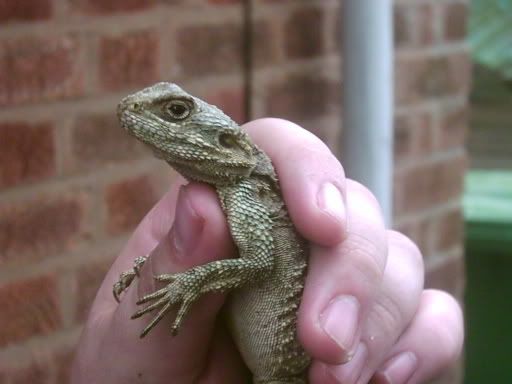
Family:
Geckos
Common name
Leopard gecko
Latin name
Eublepharis Macularis
Ease of care
beginner
Eventual size
25cm
Vivarium size
3ft long cage is a good size for a pair of these geckos and a height of 1ft as do not climb
Basic notes
Leopard geckoes get their name from their spots that cover their body much like the big cat leopard.
this species accept regular handling very well at a young age and make good starting animals to beginners to reptiles as their care is more straight forward than most other lizards available to keepers today and the amount of colourations and morphs of leopard geckoes means there’s more choice out there for the reptile keeper such as jungle,super hypo, tangerine and many more.
They are a Eublepharine gecko which means they possess eyelids instead of the transparent ones most other geckoes have and lack the emellae on the feet that allows them to climb smooth surfaces.
There is also the Chinese leopard gecko(Goniurosaurus luii) that is rarely seen available but is a nice lizard all the same.
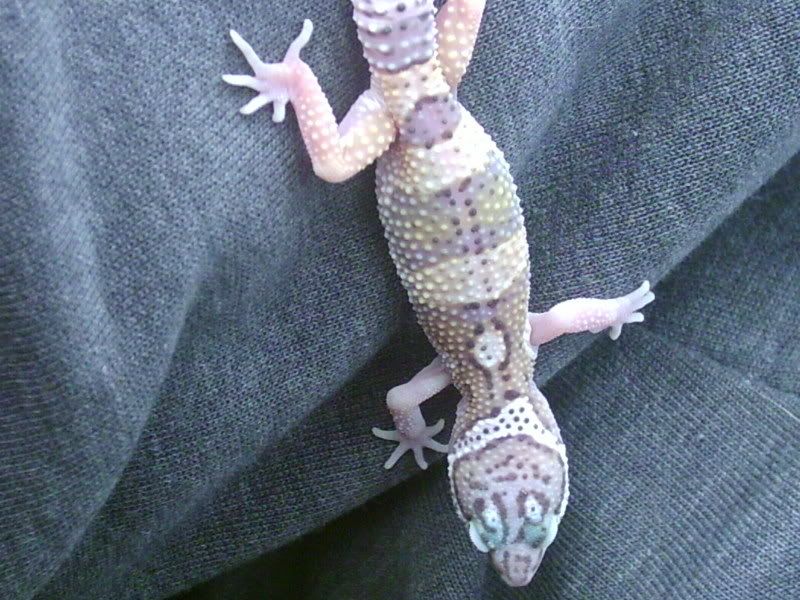
Family:
Geckos
Common name
Crested gecko
Latin name
Rhacodactylus ciliatus
other species
Gargoyle gecko(rhacodactylus auriculatus)
Mossy prehensile tailed gecko(rhacodactylus chahoua)
Giant gecko(rhacodactylus lechinanius)
Ease of care
beginner
Eventual size
7-10 inches
Vivarium size
2x1.5x2ft is a good size for a pair of these geckos
Basic notes
crested geckoes get their name from their crest that runs all the way down their back and they have little eyelash like appendages on top of their eyes.
this species accept regular handling very well thus making them popular geckoes to keep and spend most their time up one of corner of the cage resting in which they climb using adhesive pads which are covered in fine hairs called emellae which help it to climb up smooth surfaces as they do not posses eyelids, they have a transparent eyelid in which they lick clean off any dirt that could damage the eye membrane.
The colourations and patterning of crested geckoes include dalmation,harlequin,flame,buckskin and many more. They can be kept at room temperature and although they will primarily feed on soft fruit and diets that are available for them in captivity it is best to offer a variety of live foods at first particularly when younger
The gargoyle gecko is another nice species that are steadily becoming very popular and they are cared for the same as the crested geckos but are smaller. These come in colourations such as striped, mottled and orange blotched.
![]()
Family:
Geckos
Common name
Tokay gecko
Latin speices
Gecko gecko
Ease of care
intermediate
Eventual size
25-35cm
Vivarium size
2 x 2 is a good size for a pair of these lizards with good height
Basic notes
tokays get their name from their mating call of males which sounds like ‘’tok-eh’’ which is a common sound in parts of the country where they are from particularly during their breeding months.
Due to their aggressive behaviour and agility they are more suited as a display animal than a handle able gecko and when touched the tokay gecko struggles and squeaks and bites which with its powerful jaws can cause some damage so are best left to their own doing
As tokays are arboreal by nature a tall cage with plenty of branches is best although a decent sized floor area is another option as they occasionally come down to ground level to explore their surroundings, heating is a thermostatically controlled red bulb which also must be guarded to prevent burning your geckoes as they are very agile so contact with a unprotected lamp can prove life threatening or at least cause some serious damage and due to their nocturnal activity UV lighting is not necessary and if exposed to it it can cause eye problems over time.
They are blue with orange spotted markings but get darker or lighter depending on temperature or shedding.

Family
geckos
Common name
African fat tailed gecko
Latin name
Hemitheconyx caudicinctus
Ease of care
Easy
Eventual size
25cm
Vivarium size
3ft cage is good for a pair of these lizards
Basic notes
they originate from Africa where their name comes from their tails in which they store fat for the desperate months where food is scarce at certain times of the year and although they are similar to the leopard gecko their humidity and temperature needs are different as they originate from different continents
Things good for AFT cages are cork bark hides and large bark chips as substrate but watch out with the smaller varieties as it can be dangerous as it can cause blockages in the stomach thus being fatal to the animal.
they accept handling readily but you do get the odd stubborn individual and are good as a first gecko if you can find captive bred animals and are beginning to be bred in different morphs such as albino and amelanistic.
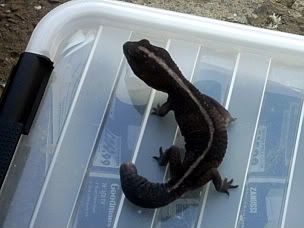
Family:
Geckos
names
Terrestrial geckos
Commoner species available
Paroedura pictus.(pictus gecko)
Stenodactylus petrii(dune gecko)
Stenodactylus sthenodactylus(elegant gecko)
Teratolepis fasciata(viper gecko)
Wonder gecko(Teratoscincus sp)
Ease of care
easy
Eventual size
10-12cm
Vivarium size
2x1x1 is good for a pair of these geckos and quite low as are terrestrial
Basic notes
These geckos are simple to keep requiring low level cages with a substrate like orchid bark that allows a moderate amount of humidity and cork bark for hiding places…
They are available at most reptile shops or throughout reptile shows. They vary in patterning and colour but is best to be careful when handling as they are small and quite delicate and if handled too roughly they drop their tails which is main defence for most lizards
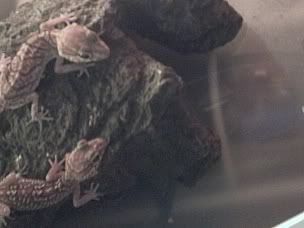
Family:
Geckos
Common name
Arboreal geckos
Common species
Flying gecko(Ptychozoon kuhli)
Moorish gecko (Tarentola mauritanica)
White spotted gecko(Tarentola annularis)
Palm gecko(Gecko vitattus)
Flat tailed house gecko(Cosymbotus platyurus)
Dwarf yellow headed gecko(Lygodactylus luteopicturatus)
Fan foot gecko(Ptyodactylus hasselquisti)
Banana gecko(gehyra vorax)
Ease of care
intermediate
Eventual size
5cm-25cm
Vivarium size
Dependant on type it can range from 18’’ long to 24’’ cube for larger spieces such as G.vorax
Basic notes
These geckos require a lot of height to their cages as they love to climb and have adhesive pads on their feet…due to this it is recommended all bulbs are protected to prevent burns and injuries caused by them.
Substrate is dependant on species environment so large bark chips usually are a suitable substrate for all and is large so it cannot be swallowed with their food and considering they never venture down below water can be sprayed onto the foliage of plants to be licked off by the geckos
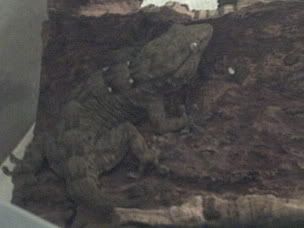
Family:
Skinks
Common name
Blue tongued skinks
species
T. scincoides intermedia(northern)
T. scincoides scincoides(eastern)
T. scincoides chimaerea(tanimbar)
T. gigas gigas(Indonesian)
T. gigas keyensis(kei island)
Ease of care
easy
Eventual size
45-60cm
Vivarium size
4 x 2 x 2 is a good size for a pair of these lizards
Basic notes
As skinks are terrestrial by nature a decent sized floor area is needed as they are quite a large lizard.
heating can be a spot bulb which must be thermostatically controlled and guarded to prevent injuries with exposure to UVB lighting to keep its bones healthy.
BTS are omnivores which means they eat animal, insect and plant matter, they eat crickets,locusts,mealworms and the occasional wax worm/silkworm or pinkie/fuzzy mice as adults but I like to vary their diet further by offering them roaches and wax moths as they are more filling for the skink all of which must be gut loaded with supplements available today such as nutrabol but a separate calcium carbonate supplement should be offered to maintain good health but they do take soft fruits mashed up into a paste with some calcium as well as greens and other fruits
They are very handleable lizards which tame down as adults to accept handling and are a good size to handle as well.
Family:
iguanids
Common name
anoles
Species
Green anole(anolis carolensis)
Brown anole(Anolis sagrei )
Knight anole(Anolis equestris)
Ease of care
intermediate
Eventual size
8-20 inches in case of the A.equestris
Vivarium size
Greens and the smaller anolis: a 18’’ x 18’’ x 24 ‘’ would suit a pair to trio of these lizards
Knights: 30’’ x 24’’ x 24’’ would suit a pair
Basic notes
These lizards are available at many pet shops but are not very suitable as handle able lizards due to their fast and skittish movements and the fact a lot are WC but make good display animals for more experienced keepers and really look good in a well planted terrarium.
They need a lot of foliage as like to hide and plenty of branches for climbing and drinking water needs to be sprayed onto foliage to be lapped up as being arboreal
The knight anoles have impressive colouration and are a larger size anole and you get exceptions of them being tame to handle.
Family: iguanids
Common name
Collared lizard
Latin name
(Crotaphytus collaris)
Ease of care
easy
Eventual size
9-12’’
Vivarium size
48’’ x 24 ‘’ x 24’’ is large enough for a pair of these lizards
Basic notes
A desert type set up would suit these types of lizards greatly and the use of play/bird sand is a good substrate for this species with a good amount of rocks and branches to climb upon these they will be very happy.
A good hotspot is good for these lizards as a basking area and good exposure to ultraviolet light like many diurnal lizards and there on in their care is relatively simple and when tame is a good alternative to the bearded dragon.
Family: iguanids
Common name
basilisks
Species
Green or plumbed basilisk(Basiliscus plumifrons)
Brown or striped basilisks(Basiliscus vitiates)
Ease of care
intermediate
Eventual size
2-3ft
Vivarium size
6’x 3’ for larger animals but bigger is better and good height
Basic notes
These lizards look amazing as adults especially the males where they get a big plumb on their head… a large litter tray/large separate water bowl is needed as they have a habit of pooing in it and like climbing so a bit of height to the cage and large sturdy branches really make the set up look really good and a good substrate that allows good humidity is also recommended
These are prone to nose rubbing so covering up the first foot of glass is recommended
Family: iguanids
Common name
Desert iguana/chuckwalla
Latin names
Dipsosaurus dorsalis
Sauromalus obesus
Ease of care
intermediate
Eventual size
16-18inches
Vivarium size
4x2x2 would be good for a pair
Basic notes
A desert type set up would suit these types of lizards greatly and the use of play/bird sand is a good substrate for this species with a good amount of rocks and branches to climb upon these they will be very happy.
A good hotspot is good for these lizards as a basking area and good exposure to ultraviolet light like many diurnal lizards
these lizards are herbivores which means they eat plant matter but they do take soft fruits....they need greens high in calcium and dark leafy vegetables but you can also supplement their diets with dandelion and weeds like tortoises would eat.
They are very handleable lizards which tame down as adults to accept handling and are a good size to handle as well.
Chuckwalla's must be at least 5yrs old before breeding and do require alot of care(thanks Tiger )
)
Family: iguanids
Common name
uromastyx
Latin name
U. ornatus
U. ocellatus
U. acanthinurus
U. Hardwick
U. benti
Ease of care
intermediate/advanced
Eventual size
12''-24’’
Vivarium size
48’’ x 18 ‘’ x 18’’ is large enough for these lizards
Basic notes
A desert type set up would suit these types of lizards greatly and the use of play/bird sand is a good substrate for this species with a good amount of rocks and branches to climb upon.
A good hotspot is good for these lizards as a basking area and good access to high UVB lighting and relatively low humidity and this speices thrives well and have the most amazing colours in lizards
these lizards are herbivores which means they eat plant matter but they do take soft fruits....they need greens high in calcium and dark leafy vegetables but you can also supplement their diets with dandelion and weeds like tortoises would eat.
Family:
lizards
Common name
sudan Plated lizards
Species
Gerrhosaurus major
Ease of care
easy
Eventual size
35-50cm
Vivarium size
3 x 2 x 2 is a good size for a pair of these lizards
Basic notes
As these lizards are mainly ground living their cages do not need to be high and its important to allow a decent sized ground area with hides and rocks for your lizards to explore and sit on.
heating can be a spot bulb which must be thermostatically controlled and guarded to prevent injuries with exposure to UVB lighting to keep its bones healthy.
plated lizards are insectivores whivh means the bulk of their diet is insects, they eat crickets,locusts,mealworms and the occasional wax worm/silkworm or pinkie/fuzzy mice for larger speices but I like to vary their diet further by offering them roaches and wax moths as they are more filling for the skink all of which must be gut loaded with supplements available today such as nutrabol but a separate calcium carbonate supplement should be offered to maintain good health but they do take soft fruits mashed up into a paste with some calcium as well as greens and other fruits
They are very handleable lizards which tame down as adults to accept handling
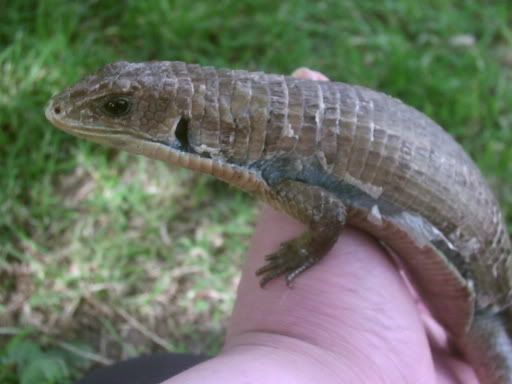
Family:
Skinks
Common name
Small skinks
Species
eumeces Schneider(berber skink)
Riopa fernandi (fire skink)
Chalcides ocellatus(ocellated skink)
Hemisphaeriodon gerrardii(pink tongued skink)
Mabuya macularia(asian sun skink)
Takydromus delineates(long tailed lizard/grass skink)
Eumeces fasciatus(five lined skink)
Cryptoblepharus egeriae(blue tailed skink)
Ease of care
Easy/intermediate
Eventual size
7-30cm
Vivarium size
2.5-3ft long cage is a good size for a pair of these lizards but bigger is better for multiple animals
Basic notes
As these lizards are mainly ground living their cages do not need to be high and its important to allow a decent sized ground area with hides and rocks for your liozards to explore and sit on.
heating can be a spot bulb which must be thermostatically controlled and guarded to prevent injuries with exposure to UVB lighting to keep its bones healthy.
skinks are insectivores whivh means the bulk of their diet is insects, they eat crickets,locusts,mealworms and the occasional wax worm/silkworm or pinkie/fuzzy mice for larger speices but I like to vary their diet further by offering them roaches and wax moths as they are more filling for the skink all of which must be gut loaded with supplements available today such as nutrabol but a separate calcium carbonate supplement should be offered to maintain good health but they do take soft fruits mashed up into a paste with some calcium as well as greens and other fruits
They are very handleable lizards which tame down as adults to accept handling.
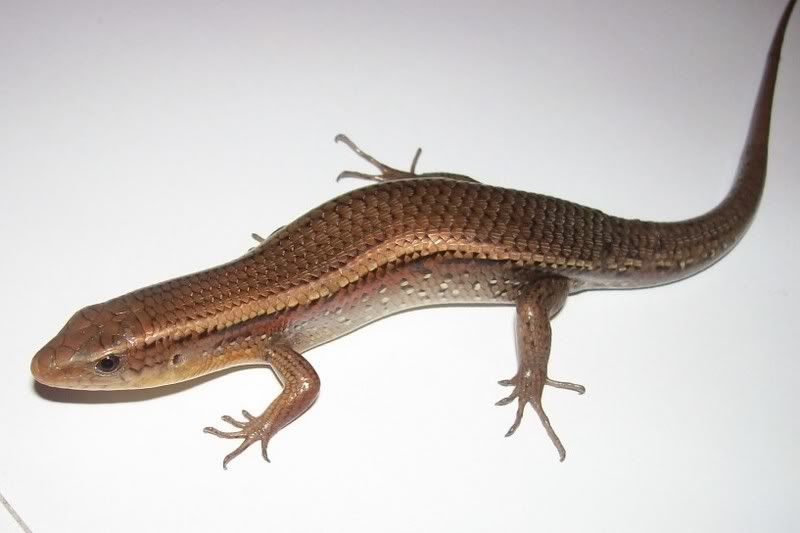
agamids
Common name
Bearded dragon
Latin name
Pogona vitticeps
Ease of care
Beginner
Eventual size
50cm to over 2ft in the case of the german giant type
Vivarium size
48’’ x 18’’ x 18’’ is good sized for one large adult bearded dragon but larger is better for multiple animals
Basic notes
These lizards love to bask and climb so a few branches and rocks in their cage would make the lizards happy and the cage look a lot nicer.
They have good personalities and they are one of the best handleable lizards around and they come in different types too such as hypomelanistic(they are light in colour and have clear nails with no black at all),sand fire and leucistic
A smaller dragon that is very similar in care to the bearded dragon but is increasingly popular is the rankins dragon (Pogona henrylawsonii) and good for people who would like bearded dragons but limited on space.

Family:
agamids
Common name
Chinese water dragon
Latin name
Physignathus Cocincinus
Other species
Australian water dragon(Physignathus lesueurii)
Indonesian water dragon (Physignathus temporalis)
Ease of care
intermediate
Eventual size
60-90cm
Vivarium size
6’x 3’ for larger animals but bigger is better with at least 2ft of height as these love to climb
Basic notes
These lizards look amazing as adults especially the males and 2/3rds of their length is tail…as their name suggests they love water so a large litter tray/large separate water bowl is needed as they have a habit of pooing in it and like climbing so a bit of height to the cage and large sturdy branches really make the set up look really good and a good substrate that allows good humidity is also recommended.
As babies they can be very nervous so this must be kept in mind when choosing these lizards but as sub adults they make good tame lizards but when first acquired it is best to cover the cage with something like dark card or newspaper as they are prone to nose rubbing.
Family:
Agamid.
Common name
agamas
common species
Red headed agama(Agama agama)
Toad headed agama(Phrynocephalus)
Starred agama(laudakia stellio vulgaris)
Pale agama(Trapelus pallida)
Orange spotted agama(Laudakia stellio picea)
Sinai agama(Pseudotrapelus sinaitus)
Ease of care
intermediate
Eventual size
6-12 inches
Vivarium size
3ft long cage would be good size for a pair or trio of these lizards
Basic notes
These lizards are available at most reptile shops but should not be a first lizard due to their skittish and nervous nature and being WC it can mean a lot of heartbreak as being full of internal parasites they are not going to be in the best of health but make really nice display animals if you can find LTC or CB agamas
They need a good basking spot and plenty of space to bask and climb as well as a small bowl to drink from and some of the species are colourful such as the Sinai and orange spotted agama.

Family:
Geckos
Common name
Leopard gecko
Latin name
Eublepharis Macularis
Ease of care
beginner
Eventual size
25cm
Vivarium size
3ft long cage is a good size for a pair of these geckos and a height of 1ft as do not climb
Basic notes
Leopard geckoes get their name from their spots that cover their body much like the big cat leopard.
this species accept regular handling very well at a young age and make good starting animals to beginners to reptiles as their care is more straight forward than most other lizards available to keepers today and the amount of colourations and morphs of leopard geckoes means there’s more choice out there for the reptile keeper such as jungle,super hypo, tangerine and many more.
They are a Eublepharine gecko which means they possess eyelids instead of the transparent ones most other geckoes have and lack the emellae on the feet that allows them to climb smooth surfaces.
There is also the Chinese leopard gecko(Goniurosaurus luii) that is rarely seen available but is a nice lizard all the same.

Family:
Geckos
Common name
Crested gecko
Latin name
Rhacodactylus ciliatus
other species
Gargoyle gecko(rhacodactylus auriculatus)
Mossy prehensile tailed gecko(rhacodactylus chahoua)
Giant gecko(rhacodactylus lechinanius)
Ease of care
beginner
Eventual size
7-10 inches
Vivarium size
2x1.5x2ft is a good size for a pair of these geckos
Basic notes
crested geckoes get their name from their crest that runs all the way down their back and they have little eyelash like appendages on top of their eyes.
this species accept regular handling very well thus making them popular geckoes to keep and spend most their time up one of corner of the cage resting in which they climb using adhesive pads which are covered in fine hairs called emellae which help it to climb up smooth surfaces as they do not posses eyelids, they have a transparent eyelid in which they lick clean off any dirt that could damage the eye membrane.
The colourations and patterning of crested geckoes include dalmation,harlequin,flame,buckskin and many more. They can be kept at room temperature and although they will primarily feed on soft fruit and diets that are available for them in captivity it is best to offer a variety of live foods at first particularly when younger
The gargoyle gecko is another nice species that are steadily becoming very popular and they are cared for the same as the crested geckos but are smaller. These come in colourations such as striped, mottled and orange blotched.
Family:
Geckos
Common name
Tokay gecko
Latin speices
Gecko gecko
Ease of care
intermediate
Eventual size
25-35cm
Vivarium size
2 x 2 is a good size for a pair of these lizards with good height
Basic notes
tokays get their name from their mating call of males which sounds like ‘’tok-eh’’ which is a common sound in parts of the country where they are from particularly during their breeding months.
Due to their aggressive behaviour and agility they are more suited as a display animal than a handle able gecko and when touched the tokay gecko struggles and squeaks and bites which with its powerful jaws can cause some damage so are best left to their own doing
As tokays are arboreal by nature a tall cage with plenty of branches is best although a decent sized floor area is another option as they occasionally come down to ground level to explore their surroundings, heating is a thermostatically controlled red bulb which also must be guarded to prevent burning your geckoes as they are very agile so contact with a unprotected lamp can prove life threatening or at least cause some serious damage and due to their nocturnal activity UV lighting is not necessary and if exposed to it it can cause eye problems over time.
They are blue with orange spotted markings but get darker or lighter depending on temperature or shedding.

Family
geckos
Common name
African fat tailed gecko
Latin name
Hemitheconyx caudicinctus
Ease of care
Easy
Eventual size
25cm
Vivarium size
3ft cage is good for a pair of these lizards
Basic notes
they originate from Africa where their name comes from their tails in which they store fat for the desperate months where food is scarce at certain times of the year and although they are similar to the leopard gecko their humidity and temperature needs are different as they originate from different continents
Things good for AFT cages are cork bark hides and large bark chips as substrate but watch out with the smaller varieties as it can be dangerous as it can cause blockages in the stomach thus being fatal to the animal.
they accept handling readily but you do get the odd stubborn individual and are good as a first gecko if you can find captive bred animals and are beginning to be bred in different morphs such as albino and amelanistic.

Family:
Geckos
names
Terrestrial geckos
Commoner species available
Paroedura pictus.(pictus gecko)
Stenodactylus petrii(dune gecko)
Stenodactylus sthenodactylus(elegant gecko)
Teratolepis fasciata(viper gecko)
Wonder gecko(Teratoscincus sp)
Ease of care
easy
Eventual size
10-12cm
Vivarium size
2x1x1 is good for a pair of these geckos and quite low as are terrestrial
Basic notes
These geckos are simple to keep requiring low level cages with a substrate like orchid bark that allows a moderate amount of humidity and cork bark for hiding places…
They are available at most reptile shops or throughout reptile shows. They vary in patterning and colour but is best to be careful when handling as they are small and quite delicate and if handled too roughly they drop their tails which is main defence for most lizards

Family:
Geckos
Common name
Arboreal geckos
Common species
Flying gecko(Ptychozoon kuhli)
Moorish gecko (Tarentola mauritanica)
White spotted gecko(Tarentola annularis)
Palm gecko(Gecko vitattus)
Flat tailed house gecko(Cosymbotus platyurus)
Dwarf yellow headed gecko(Lygodactylus luteopicturatus)
Fan foot gecko(Ptyodactylus hasselquisti)
Banana gecko(gehyra vorax)
Ease of care
intermediate
Eventual size
5cm-25cm
Vivarium size
Dependant on type it can range from 18’’ long to 24’’ cube for larger spieces such as G.vorax
Basic notes
These geckos require a lot of height to their cages as they love to climb and have adhesive pads on their feet…due to this it is recommended all bulbs are protected to prevent burns and injuries caused by them.
Substrate is dependant on species environment so large bark chips usually are a suitable substrate for all and is large so it cannot be swallowed with their food and considering they never venture down below water can be sprayed onto the foliage of plants to be licked off by the geckos

Family:
Skinks
Common name
Blue tongued skinks
species
T. scincoides intermedia(northern)
T. scincoides scincoides(eastern)
T. scincoides chimaerea(tanimbar)
T. gigas gigas(Indonesian)
T. gigas keyensis(kei island)
Ease of care
easy
Eventual size
45-60cm
Vivarium size
4 x 2 x 2 is a good size for a pair of these lizards
Basic notes
As skinks are terrestrial by nature a decent sized floor area is needed as they are quite a large lizard.
heating can be a spot bulb which must be thermostatically controlled and guarded to prevent injuries with exposure to UVB lighting to keep its bones healthy.
BTS are omnivores which means they eat animal, insect and plant matter, they eat crickets,locusts,mealworms and the occasional wax worm/silkworm or pinkie/fuzzy mice as adults but I like to vary their diet further by offering them roaches and wax moths as they are more filling for the skink all of which must be gut loaded with supplements available today such as nutrabol but a separate calcium carbonate supplement should be offered to maintain good health but they do take soft fruits mashed up into a paste with some calcium as well as greens and other fruits
They are very handleable lizards which tame down as adults to accept handling and are a good size to handle as well.
Family:
iguanids
Common name
anoles
Species
Green anole(anolis carolensis)
Brown anole(Anolis sagrei )
Knight anole(Anolis equestris)
Ease of care
intermediate
Eventual size
8-20 inches in case of the A.equestris
Vivarium size
Greens and the smaller anolis: a 18’’ x 18’’ x 24 ‘’ would suit a pair to trio of these lizards
Knights: 30’’ x 24’’ x 24’’ would suit a pair
Basic notes
These lizards are available at many pet shops but are not very suitable as handle able lizards due to their fast and skittish movements and the fact a lot are WC but make good display animals for more experienced keepers and really look good in a well planted terrarium.
They need a lot of foliage as like to hide and plenty of branches for climbing and drinking water needs to be sprayed onto foliage to be lapped up as being arboreal
The knight anoles have impressive colouration and are a larger size anole and you get exceptions of them being tame to handle.
Family: iguanids
Common name
Collared lizard
Latin name
(Crotaphytus collaris)
Ease of care
easy
Eventual size
9-12’’
Vivarium size
48’’ x 24 ‘’ x 24’’ is large enough for a pair of these lizards
Basic notes
A desert type set up would suit these types of lizards greatly and the use of play/bird sand is a good substrate for this species with a good amount of rocks and branches to climb upon these they will be very happy.
A good hotspot is good for these lizards as a basking area and good exposure to ultraviolet light like many diurnal lizards and there on in their care is relatively simple and when tame is a good alternative to the bearded dragon.
Family: iguanids
Common name
basilisks
Species
Green or plumbed basilisk(Basiliscus plumifrons)
Brown or striped basilisks(Basiliscus vitiates)
Ease of care
intermediate
Eventual size
2-3ft
Vivarium size
6’x 3’ for larger animals but bigger is better and good height
Basic notes
These lizards look amazing as adults especially the males where they get a big plumb on their head… a large litter tray/large separate water bowl is needed as they have a habit of pooing in it and like climbing so a bit of height to the cage and large sturdy branches really make the set up look really good and a good substrate that allows good humidity is also recommended
These are prone to nose rubbing so covering up the first foot of glass is recommended
Family: iguanids
Common name
Desert iguana/chuckwalla
Latin names
Dipsosaurus dorsalis
Sauromalus obesus
Ease of care
intermediate
Eventual size
16-18inches
Vivarium size
4x2x2 would be good for a pair
Basic notes
A desert type set up would suit these types of lizards greatly and the use of play/bird sand is a good substrate for this species with a good amount of rocks and branches to climb upon these they will be very happy.
A good hotspot is good for these lizards as a basking area and good exposure to ultraviolet light like many diurnal lizards
these lizards are herbivores which means they eat plant matter but they do take soft fruits....they need greens high in calcium and dark leafy vegetables but you can also supplement their diets with dandelion and weeds like tortoises would eat.
They are very handleable lizards which tame down as adults to accept handling and are a good size to handle as well.
Chuckwalla's must be at least 5yrs old before breeding and do require alot of care(thanks Tiger
Family: iguanids
Common name
uromastyx
Latin name
U. ornatus
U. ocellatus
U. acanthinurus
U. Hardwick
U. benti
Ease of care
intermediate/advanced
Eventual size
12''-24’’
Vivarium size
48’’ x 18 ‘’ x 18’’ is large enough for these lizards
Basic notes
A desert type set up would suit these types of lizards greatly and the use of play/bird sand is a good substrate for this species with a good amount of rocks and branches to climb upon.
A good hotspot is good for these lizards as a basking area and good access to high UVB lighting and relatively low humidity and this speices thrives well and have the most amazing colours in lizards
these lizards are herbivores which means they eat plant matter but they do take soft fruits....they need greens high in calcium and dark leafy vegetables but you can also supplement their diets with dandelion and weeds like tortoises would eat.
Family:
lizards
Common name
sudan Plated lizards
Species
Gerrhosaurus major
Ease of care
easy
Eventual size
35-50cm
Vivarium size
3 x 2 x 2 is a good size for a pair of these lizards
Basic notes
As these lizards are mainly ground living their cages do not need to be high and its important to allow a decent sized ground area with hides and rocks for your lizards to explore and sit on.
heating can be a spot bulb which must be thermostatically controlled and guarded to prevent injuries with exposure to UVB lighting to keep its bones healthy.
plated lizards are insectivores whivh means the bulk of their diet is insects, they eat crickets,locusts,mealworms and the occasional wax worm/silkworm or pinkie/fuzzy mice for larger speices but I like to vary their diet further by offering them roaches and wax moths as they are more filling for the skink all of which must be gut loaded with supplements available today such as nutrabol but a separate calcium carbonate supplement should be offered to maintain good health but they do take soft fruits mashed up into a paste with some calcium as well as greens and other fruits
They are very handleable lizards which tame down as adults to accept handling

Family:
Skinks
Common name
Small skinks
Species
eumeces Schneider(berber skink)
Riopa fernandi (fire skink)
Chalcides ocellatus(ocellated skink)
Hemisphaeriodon gerrardii(pink tongued skink)
Mabuya macularia(asian sun skink)
Takydromus delineates(long tailed lizard/grass skink)
Eumeces fasciatus(five lined skink)
Cryptoblepharus egeriae(blue tailed skink)
Ease of care
Easy/intermediate
Eventual size
7-30cm
Vivarium size
2.5-3ft long cage is a good size for a pair of these lizards but bigger is better for multiple animals
Basic notes
As these lizards are mainly ground living their cages do not need to be high and its important to allow a decent sized ground area with hides and rocks for your liozards to explore and sit on.
heating can be a spot bulb which must be thermostatically controlled and guarded to prevent injuries with exposure to UVB lighting to keep its bones healthy.
skinks are insectivores whivh means the bulk of their diet is insects, they eat crickets,locusts,mealworms and the occasional wax worm/silkworm or pinkie/fuzzy mice for larger speices but I like to vary their diet further by offering them roaches and wax moths as they are more filling for the skink all of which must be gut loaded with supplements available today such as nutrabol but a separate calcium carbonate supplement should be offered to maintain good health but they do take soft fruits mashed up into a paste with some calcium as well as greens and other fruits
They are very handleable lizards which tame down as adults to accept handling.






